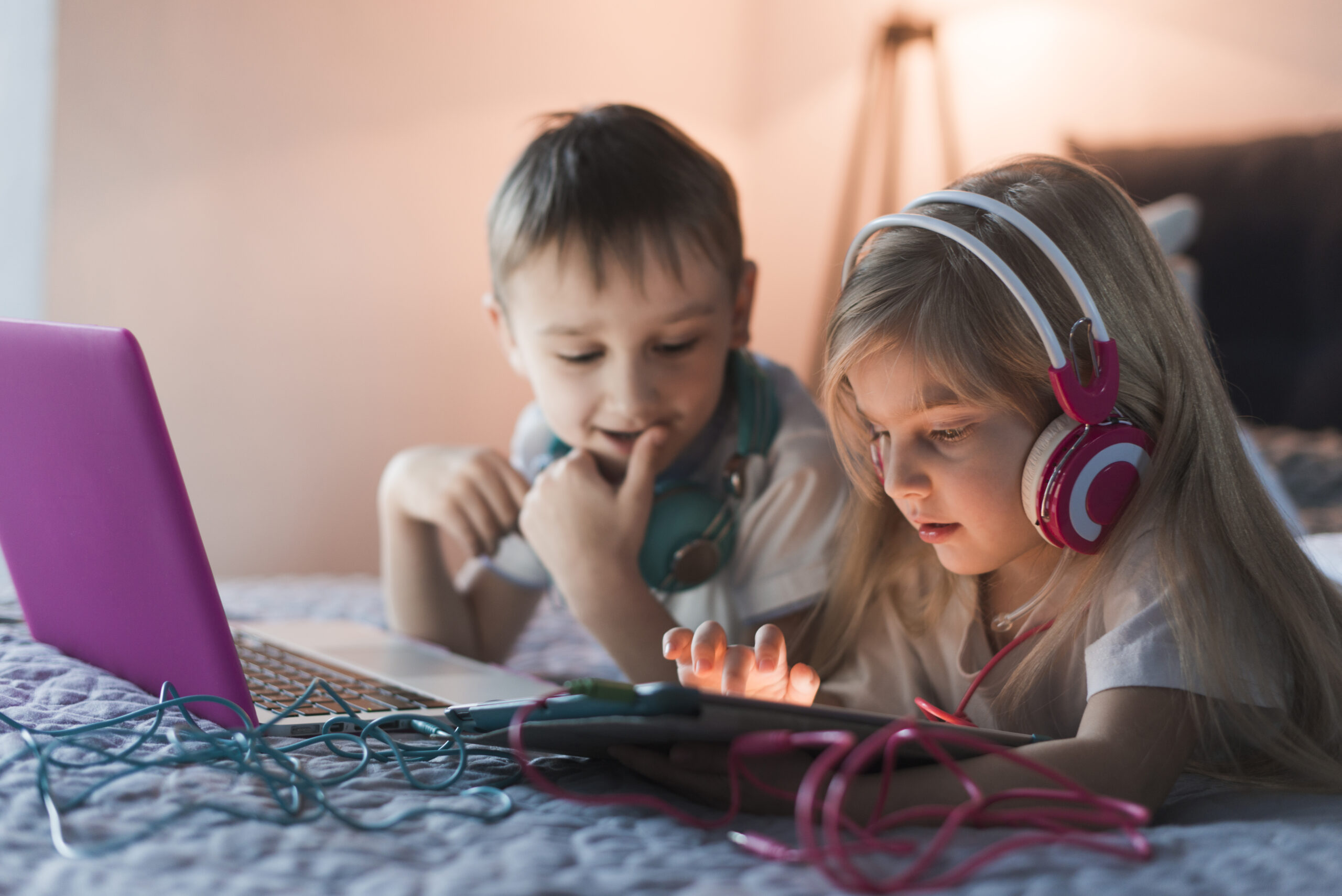Unlocking Bilingualism: How Technology & Multimedia Content Support Language Learning

In today’s digital age, unlocking bilingualism through technology and multimedia content is key to enriching language learning experiences for children. In this post, we’ll explore how technology and multimedia content can enrich language learning experiences for young learners. Technology plays a significant role in shaping how we learn and communicate and offers a wealth of opportunities to enhance language learning experiences when raising bilingual children. From interactive apps to online resources, here’s how technology can unlock the potential of bilingualism in children.
1. Language Learning Apps:
Language learning apps have revolutionized the way children learn languages. With engaging interfaces and interactive features, these apps make language learning fun and accessible for kids of all ages. Apps like Duolingo, Rosetta Stone, and Babbel offer lessons in multiple languages, allowing children to practice vocabulary, grammar, and pronunciation at their own pace. Parents can also find apps specifically designed for bilingual children, offering activities and games that reinforce language skills in both languages. Some examples of language learning Apps for kids are:
Language Learning Apps for Kids:
- Duolingo ABC (teaches reading and writing in multiple languages)
- Gus on the Go (teaches vocabulary in various languages)
- Little Pim (teaches vocabulary and phrases in multiple languages)
- Endless Alphabet (teaches vocabulary in English and other languages)
2. Multimedia Content:
The internet is a treasure trove of multimedia content in multiple languages. Children can explore bilingual storybooks, videos, songs, and podcasts, immersing themselves in authentic language experiences. Platforms like YouTube, Netflix, and Spotify offer a wide range of content in different languages, making it easy for children to engage with language outside traditional learning settings. Watching cartoons, listening to music, and following along with audiobooks are enjoyable ways for kids to absorb new vocabulary and improve their language comprehension. Some examples of multimedia content are:
Bilingual Cartoons and TV Shows:
- “Dora the Explorer” (English and Spanish)
- “Mickey Mouse Clubhouse” (available in multiple languages)
- “Pocoyo” (English and Spanish)
- “Peppa Pig” (available in multiple languages)
Bilingual Educational Videos:
- National Geographic Kids videos (available in multiple languages)
- TED-Ed animations (available in multiple languages)
- Khan Academy Kids videos (available in multiple languages)
- BBC Earth Kids videos (available in multiple languages)
Bilingual Audiobooks and Podcasts:
- “The Little Prince” by Antoine de Saint-Exupéry (available in multiple languages)
- “The Adventures of Tintin” by Hergé (available in multiple languages)
- “Spanish Playground” podcast
- “FrenchPod101” podcast
3. Virtual Language Exchanges:
Technology allows children to connect with speakers of other languages worldwide through virtual language exchange platforms. Websites like HelloTalk and Tandem pair language learners based on their interests and proficiency levels, enabling children to practice speaking and writing in their target language with native speakers. These exchanges improve language skills and foster cultural understanding and global connections.
4. Educational Websites and Games:
Many educational websites and games are designed to support bilingual learning. Websites like BBC Languages, National Geographic Kids, and PBS Kids offer interactive games, quizzes, and activities in multiple languages, covering various subjects from science to geography. These resources allow children to reinforce language skills while dynamically and engagingly exploring topics of interest.
5. Language Learning Communities:
Social media platforms and online forums unite bilingual families and language enthusiasts, creating supportive communities where parents can share tips, resources, and success stories. Platforms like Facebook groups, Reddit communities, and language learning forums allow parents to seek advice, exchange ideas, and celebrate their children’s language milestones. These communities offer valuable support and encouragement on the bilingual journey.
In conclusion, technology has transformed the landscape of bilingual education, offering innovative tools and resources to support language learning in children. By harnessing the power of digital technology, parents can create rich and immersive language experiences for their children, helping them develop proficiency and fluency in multiple languages from an early age. Whether through interactive apps, multimedia content, virtual exchanges, educational websites, or online communities, technology opens doors to a world of language learning possibilities.

